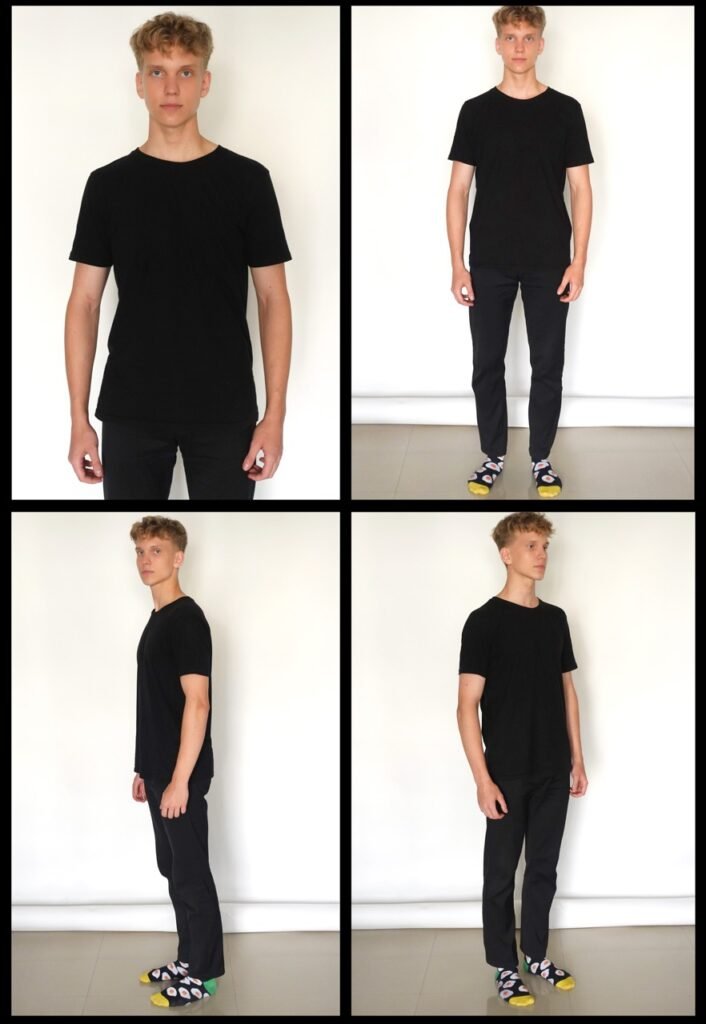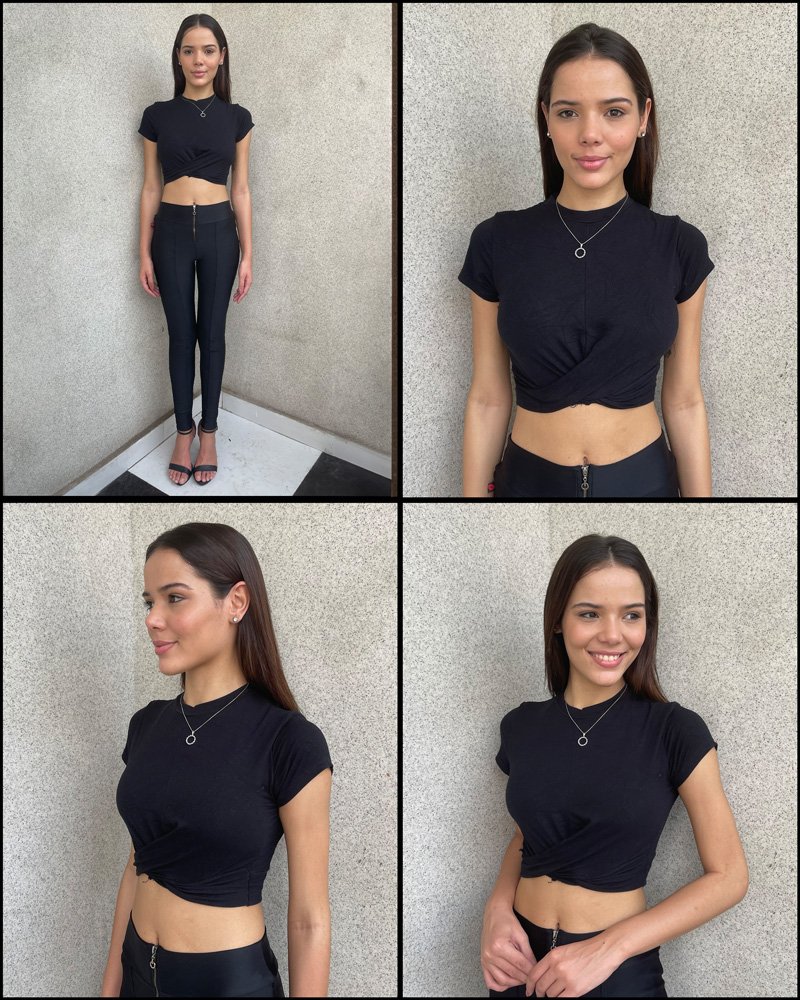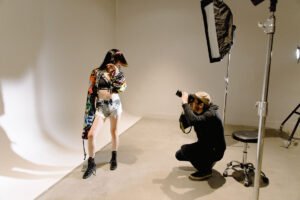In this article, we’ll break down everything you need to know about digital and Polaroid photos in the modeling industry. You’ll learn what these photos are, how to take them, what outfits work best, and which poses are most suitable for professional Polaroid or digital submissions.
What is a Polaroid Photo?
In the world of modeling, a Polaroid (or digital photo) refers to a raw, unedited image that shows the model in their most natural state. These images must be free from retouching, filters, or artificial lighting—just simple, natural light is allowed. Importantly, selfies are never acceptable as Polaroid photos. So, avoid using selfies as Polaroids, as they typically fail to meet the quality and authenticity standards required for professional use.

The great news is you don’t need fancy equipment or a large budget to take Polaroid or digital photos. With a few simple tips, you can capture high-quality photos at home that will meet the standards of modeling agencies.
Why Polaroid Photos Matter
Polaroid photos are crucial because agencies and clients want to see the unvarnished version of a model. These images help them evaluate a model’s true look before making any decisions about whether to work with them. That’s why it’s essential that Polaroids are free from makeup, heavy styling, or over-the-top backgrounds. Instead, they should be clean, simple, and focused entirely on showcasing the model’s natural features.
Why Every Model Needs Polaroid Photos
Every professional model needs to have up-to-date Polaroid photos, regardless of experience level. Even the most experienced models update their Polaroids regularly to reflect any changes in appearance over time. Agencies need to know exactly what you look like right now, so having current Polaroids is a must. Whether you’re just starting out or a seasoned pro, this rule applies universally.
A Common Mistake for New Models
Many aspiring models mistakenly believe that sending polished portfolio shots will make a better impression than Polaroid photos. This is a major error. Professional photos are often heavily edited and don’t accurately reflect how the model truly looks, which can mislead agencies. Sending portfolio images instead of raw, unedited Polaroids can cause agencies to overlook you altogether, as it suggests either a lack of understanding of the industry or dishonesty—neither of which are desirable traits.
How Do Clients Evaluate Models Using Polaroid Photos?
Clients and agencies use Polaroids to assess a model’s physical features in the most honest way possible. They look at everything from body proportions, facial features, and skin tone to more specific details like height and weight. Agencies need this clear view of the model to promote them effectively and identify the best jobs that suit their unique strengths.
Taking Polaroid Photos at Home
You don’t need a studio to take great Polaroid photos. Find a clean, light-colored wall in your home, ideally near a window with natural light. Avoid using artificial light sources like lamps, as they can distort your appearance. If you don’t have access to ample natural light indoors, consider taking your Polaroids outside in your yard or on your rooftop during the late afternoon, when the sunlight is softer and more flattering.
Make sure to have a friend or family member take the photos—never take selfies. The background should be simple, and the lighting should be natural to ensure your true look comes through.

Polaroid Photo Standards for Modeling Agencies
Although different agencies may have specific requirements, the following are the typical types of digital photos you’ll need:
1. Full Body, Front-Facing: Stand in front of the camera with your entire body visible.
2. Headshot (Head and Shoulders): A close-up that clearly shows your facial features.
3. Profile Views (Left and Right): Turn 45 degrees to the camera to showcase your profile.
4. Close-Up: A tight shot focusing on your face and shoulders.
5. Side Views (90 Degrees): Stand completely side-on to the camera, facing forward.
Recommended Outfits for Polaroid Photos
For Women: Wear form-fitting clothes like skinny jeans in black or blue with a simple tank top or t-shirt. High heels are essential as they help elongate your figure, giving clients a better sense of your body proportions.
For Men: A fitted pair of jeans and a plain white or black t-shirt works best. Avoid wearing loose clothing, hoodies, or busy patterns as they can distort your body shape. If you’re pursuing work in swimwear or underwear modeling, you may choose to go shirtless or wear swim briefs in your photos.
For models with athletic builds, showing off your physique in swimwear or without a shirt can help agencies evaluate your suitability for swimwear, sportswear, or underwear campaigns. Fit and toned models are in high demand for these kinds of jobs, and showcasing your body accurately can give you an edge.
Hair and Makeup Guidelines
When it comes to Polaroids, less is more. Women should avoid heavy makeup, though a small amount of concealer to cover minor blemishes is acceptable. Your hair should also be styled simply—nothing overly done or fancy. If you have long hair, it’s a good idea to take one photo with your hair down and another with it tied back, so agencies can see your face fully.
Why Regularly Updating Your Polaroid Photos is Essential
Your look can change over time—whether it’s a new haircut, a change in weight, or something as simple as growing out your hair. That’s why it’s crucial to keep your Polaroids up to date. Agencies and clients rely on these images to assess your current appearance, and outdated photos can misrepresent you, which may hurt your chances of landing jobs.
Conclusion
Polaroid and digital photos are essential tools in the modeling world. These unedited, simple images allow agencies and clients to see models in their most natural state. By adhering to the guidelines for lighting, clothing, and posing, you can present your best, most authentic self. Remember, regularly updating these photos is key to ensuring that agencies always see the real you and can confidently promote you to clients.



